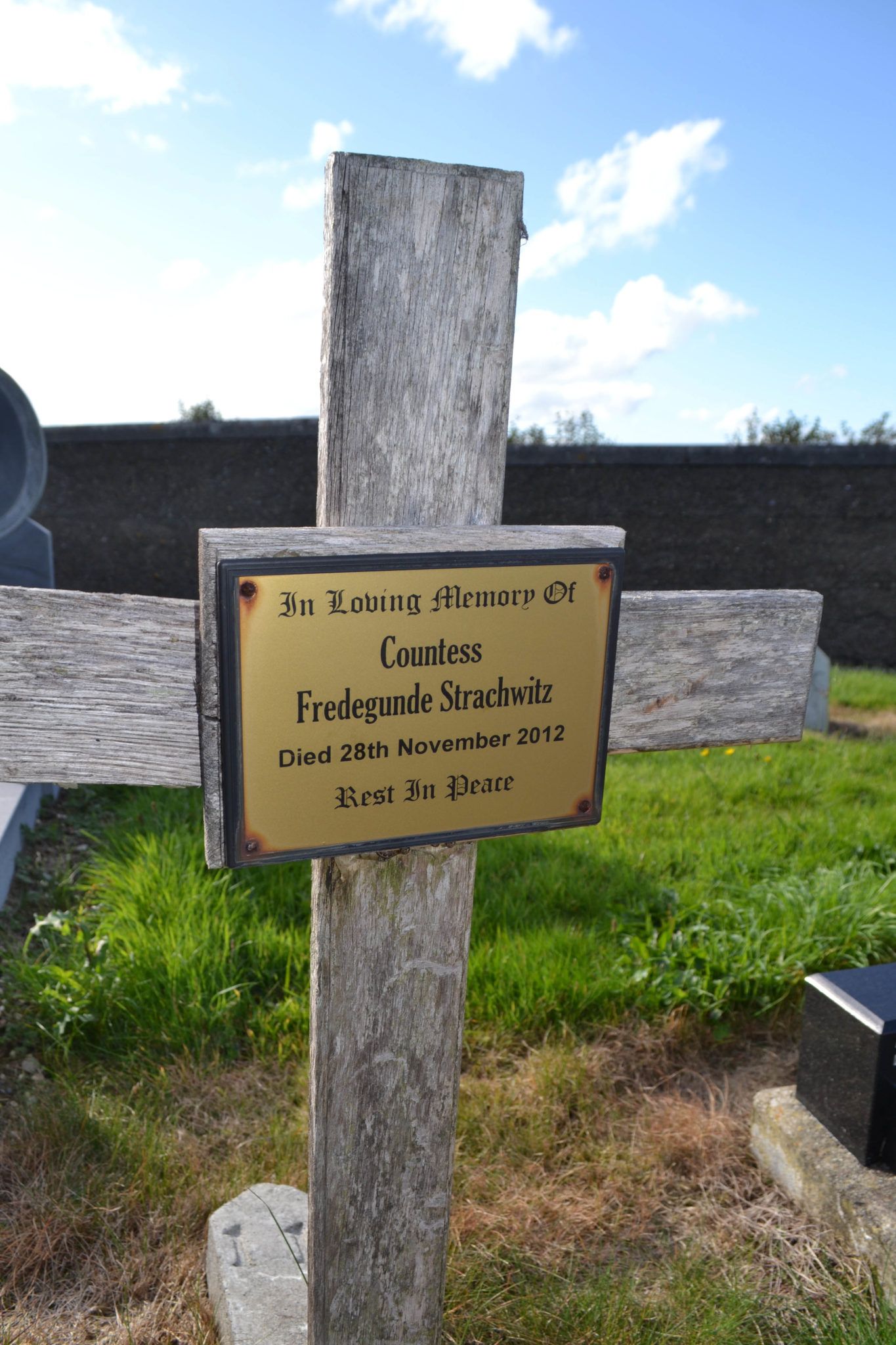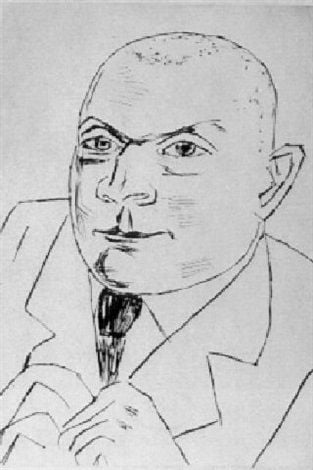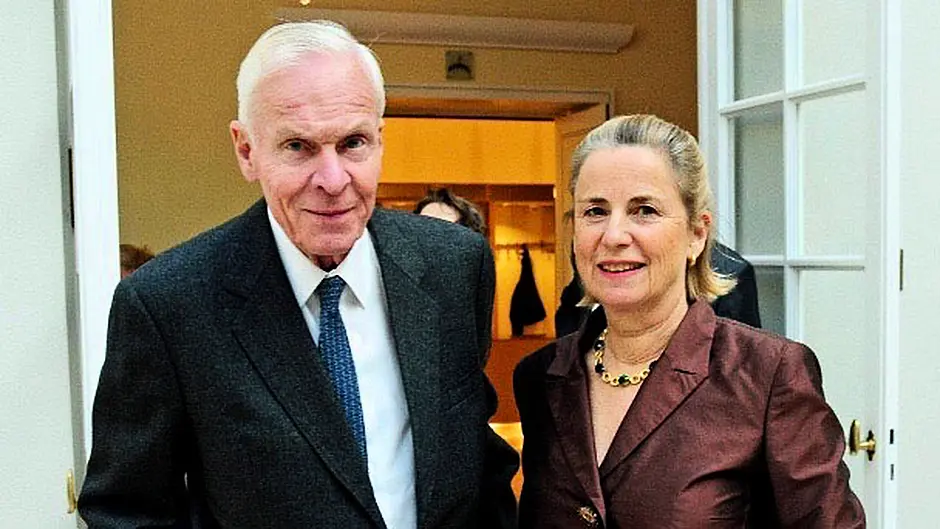
If you delve a little deeper in the backgrounds of three colourful women who made West Cork their home, a fairly dark past emerges, linking them to the Nazi party in Germany
TO the right of the cemetery gate in Castlehaven an unusual name appears on one of the grave markers: Countess Fredegunde Strachwitz.
Born Freiin von Rochenberg in Hamburg on 15th September 1921, the Countess had a privileged upbringing in a Silesian castle. Having divorced her first husband (Felix Wilhelm Lux), in 1952 she married 32-year-old Hyacinth Graf Strachwitz.
By the early 1960s, Fredegunde was living in style at Point House, Castletownshend, where in January 1963 we learn from The Southern Star that she had to pay compensation to her gardener, John O’Driscoll, who had been off work since August with dermatitis, after pulling weeds in her garden.
For whatever reason, her circumstances changed and she ended her days in a small terraced house at St Mary’s Park, Dunmanway – a world apart from the castle of her childhood.
Fredegunde died on November 28th 2012 at Mount Carmel Hospital, Clonakilty, and was buried in the New Cemetery at St Barrahane’s, Castlehaven.
 The grave marker for Countess Strachwitz in Castlehaven this week.
The grave marker for Countess Strachwitz in Castlehaven this week.
Her obituary in The Southern Star (November 30th 2012) refers to her ‘many friends’ in West Cork.
Fredegunde’s father-in-law, Hyazinth Graf Strachwitz von Gross-Zauche und Camminetz (1893-1968), served as one of Adolf Hitler’s top generals, and is the subject of Raymond Bagdonas’s book The Devil’s General (2014).
Strachwitz became a member of the Nazi Party in Breslau in 1932. The following year he joined the SS, and was promoted to Sturmbannführer in 1936.
 General Hyazinth Graf Strachwitz whosedaughter-in-law had many friends in West Cork. He served as one of Adolf Hitler’s top generals.
General Hyazinth Graf Strachwitz whosedaughter-in-law had many friends in West Cork. He served as one of Adolf Hitler’s top generals.
He fought in all the major campaigns, and participated in the invasions of Poland (1939), and the Soviet Union (Operation Barbarossa, 1940). In 1942 he commanded the 1st Batallion, Panzer Regiment, leading tanks into Stalingrad. Severely wounded, he was forced to hand over command.
Hitler himself presented Strachwitz with awards for bravery and command in December 1942.
According to David de Jong in his new book Nazi Billionaires: The Dark History of Germany’s Wealthiest Dynasties (2022), the families of two other titled women from West Cork were enriched by ‘dirty money.’
Baroness Rudi St Paul was the daughter of art collector Baron Rudolf von Simolin-Bathory. Rudi grew up to become a great friend of Unity Mitford of the famous Mitford family. While in Munich in 1939 Unity told her she would commit suicide if Britain declared war on Germany, and even showed Rudi the pistol with which, on September 3rd, she duly shot herself in the head.
Like Fredegunde Graf Strachwitz, Rudi also owned Point House. (The current owners of Point House have no connection to either woman. The ‘baroness’ – as she was known – was much loved locally. Terri Kearney, manager of Skibbereen Heritage Centre, recalls how the baroness used to ‘whiz around the roads’ in a brightly coloured sports car, scarf trailing in the wind.
Terri remembers visiting her house when she was around six years old. ‘She used to keep lots of donkeys, and my dad brought her quite a few of them and when he’d go down there, I would be screaming to be taken along as there was always a Toblerone – so exotic! She was always lovely to me as a child and was such fun … She stands out in full technicolour in my memories of childhood.’
A married couple who still live in the area confirmed that the baroness ‘seemed to integrate quite well and was treated like a local’.
They share vivid memories of Rudi’s famous car, believed to be a red Porsche (possibly a 911), which the husband greatly admired. ‘My wife’, he says, ‘remembers getting a lift when she was about 10 or 12 and being terrified by the speed at which it was driven.’ This was at a time when cars were not very common in West Cork, and the choice was limited to Morris Minors, VW Beetles and Fords. He, too, recollects her pet donkeys. ‘She sent Christmas cards with pictures of them – signed Rudi St Paul.’
The baroness’ father, Baron Freiherr Rudolf von Simolin (1885-1945), was not merely an art collector, with a keen interest in paintings by Max Beckmann. He was also a shareholder and board member of IG Farben, a chemical and pharmaceutical giant, based in Frankfurt.
IG Farben was a major donor to the Nazi party. In his book, de Jong describes how executives from IG Farben were among Germany’s most wealthy and influential businessmen who met Hermann Göring on 20 February 1933 – just three weeks after Hitler had seized power. By providing the Führer with funds, they were assured protection from a left wing putsch that threatened to bring down their companies. IG Farben agreed to pledge millions.
Having purged itself of Jewish employees, the conglomerate became a major government contractor.
Described in a recent article by historian Mark Spicka as ‘the most notorious German industrial concern during the Third Reich’, it relied on slave labour from concentration camps, including 30,000 from Auschwitz, where it established a synthetic oil and rubber plant. It also conducted drug experiments on live inmates at Auschwitz and Mauthausen concentration camps. One of its subsidiaries, Degesch, supplied the poison gas, Zyklon B, which killed over one million people in gas chambers during the Holocaust.
Although he was a member of the IG Farben board, it should be pointed out that there is no evidence that Baron Freiherr Rudolf von Simolin was personally involved in any of these activities.
 A sketch of Baron Simolin by Max Beckmann. His daughter, Baroness Rudi St Paul, was much-loved during her time living in Castlehaven.
A sketch of Baron Simolin by Max Beckmann. His daughter, Baroness Rudi St Paul, was much-loved during her time living in Castlehaven.
On his death, the Baron bequeathed to Rudi the family’s splendid country house on Lake Starnberg in Upper Bavaria – Seeseiten Castle..
Baroness Rudi’s daughter, Francine St Paul, also came to settle in Point House. Terri Kearney remembers meeting Francine and her husband August von Finck Jr during the 1980s and ’90s, describing her as ‘an elegant lady’.
When Francine married Finck, she was drawn into a Nazi billionaire dynasty. August von Finck Sr (1898-1980) had made a fortune by seizing Jewish businesses. Described by de Jong as the ‘richest and stingiest’ man in Bavaria, his frugality made him appear ‘cruel and distant’.
The von Fincks accumulated huge fortunes by their connections to Hitler and managed to retain their wealth and influence to this day, according to de Jong. The family ended up owning Löwenbräu breweries, the insurance giant Allianz and von Rothschild Bank, and became the main shareholder of the Swiss restaurant and hotel chain Mövenpick.
In 1999, says de Jong, von Finck Jr left Munich and immigrated with Francine and their four children to ‘tax friendly’ Switzerland, where they lived handsomely off the family wealth, and August commuted between his stately homes by helicopter. One of their bases was the medieval castle at Weinfelden near Zurich. When he died last November, aged 91, he was one of the richest men in Switzerland. Francine and his four children have inherited his fortune, worth $8.6bn.
The daughter-in law of one of Hitler’s most famous generals, the lady whose father’s company conducted medical experiments in the concentration camps, and the wife of a billionaire mogul whose family made a fortune by seizing Jewish businesses, seem to have all integrated well into the West Cork community, where they gained respect.
Locals appear to have treated them fondly. But would they have been equally friendly towards them had they known more about their ‘less respectable’ backgrounds?







